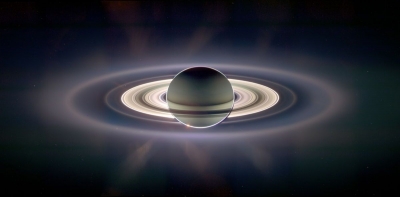
Saturn’s rings are made of billions of pieces of ice, dust and rocks. Some of these particles are as small as a grain of salt, while others are as big as houses. These chucks of rock and ice are thought to be pieces of comets, asteroids or even moons which were torn apart by the strong gravity of Saturn before they could reach the planet.
Galileo Galilei was the first to see Saturn’s rings in 1610, although from his telescope the rings looked more like handles or arms. Forty five years later, in 1655, Dutch astronomer Christiaan Huygens, who had a more powerful telescope, later proposed that Saturn had a thin, flat ring.
As scientists developed better instruments, they continued to learn more about the structure and composition of the rings. Saturn actually has many rings made of billions of particles of ice and rock, ranging in size from a grain of sugar to the size of a house. The particles are believed to be debris left over from comets, asteroids or shattered moons. A 2016 study also suggested the rings may be the carcasses of dwarf planets.
The largest ring spans 7,000 times the diameter of the planet. The main rings are typically only about 30 feet (9 meters) thick, but the Cassini-Huygens spacecraft revealed vertical formations in some of the rings, with particles piling up in bumps and ridges more than 2 miles (3 km) high.
The rings are named alphabetically in the order they were discovered. The main rings, working out from the planet, are known as C, B and A. The innermost is the extremely faint D ring, while the outermost to date, revealed in 2009, is so big that it could fit a billion Earths within it. The Cassini Division, a gap some 2,920 miles (4,700 km) wide, separates rings B and A.
Credit : Space.com
Picture Credit : Google




